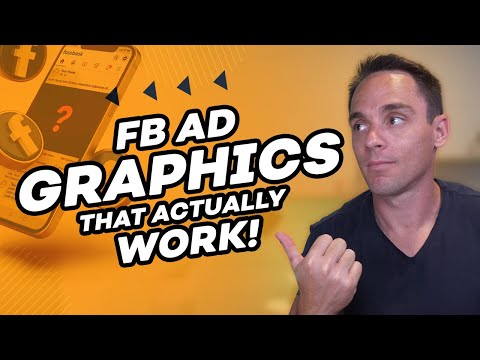Lucrative Salary and Exciting Job: Advertising Designer

Advertising Designer Job Description Template
Advertising Designer Job Description An advertising designer is a creative professional responsible for developing and executing visual concepts for advertising campaigns. They collaborate with marketing teams, clients, and other designers to create compelling and effective advertisements across various platforms, including print, digital, and social media. The primary role of an advertising designer is to capture the attention of the target audience and communicate the message of the brand or product through visually appealing designs. They use their artistic skills and knowledge of design principles to create eye-catching graphics, illustrations, and layouts. They also choose appropriate colors, fonts, and images to enhance the overall visual impact of the advertisement. In addition to creating static advertisements, advertising designers may also be involved in creating dynamic content, such as animated banners or videos. They need to stay updated with current design trends and technologies to incorporate innovative and engaging elements into their work. Attention to detail is crucial for an advertising designer as they need to ensure that the final product meets the client’s requirements and brand guidelines. They should also be able to work under tight deadlines and manage multiple projects simultaneously. Key skills for an advertising designer: – Creativity: The ability to think outside the box and come up with fresh and unique design ideas. – Communication: Effective communication skills to understand clients’ needs and collaborate with team members. Overall, an advertising designer plays a vital role in shaping the visual identity of a brand and creating impactful advertisements that attract and engage the target audience.Advertising Designer Responsibilities
Advertising Designer Requirements
How Much Does A Advertising Designer Make?
Advertising Designer Salary
| Experience Level | Annual Salary |
|---|---|
| Entry Level | $40,000 – $55,000 |
| Mid-Level | $55,000 – $75,000 |
| Senior Level | $75,000 – $100,000+ |
An advertising designer is responsible for creating visual concepts and designs for various advertising campaigns. They work closely with the marketing team to understand the client’s requirements and develop creative solutions to communicate the brand’s message effectively. The salary of an advertising designer varies based on their experience level. Entry-level designers can expect to earn between $40,000 and $55,000 per year. Mid-level designers can earn between $55,000 and $75,000, while senior-level designers can earn $75,000 or more annually. The salary range may also depend on factors such as location, company size, and industry.
Advertising Designer Salaries by Country
Top Paying Countries for Advertising Designer
| Country | Average Salary (USD) |
|---|---|
| United States | 65,000 |
| Switzerland | 60,000 |
| Australia | 55,000 |
| United Kingdom | 50,000 |
| Canada | 45,000 |
An advertising designer’s salary can vary greatly depending on the country they work in. The table above showcases the top paying countries for advertising designers. The United States leads the list with an average salary of $65,000, followed by Switzerland with $60,000. Australia, the United Kingdom, and Canada also offer competitive salaries ranging from $45,000 to $55,000. These figures highlight the importance of location when considering a career in advertising design, as it can significantly impact earning potential. It is crucial for aspiring advertising designers to research and compare salaries across different countries to make informed decisions about their professional paths.
A video on the topic Advertising Designer
Video Source : Andrew HubbardInterview Questions for Advertising Designer
1. What is your background in advertising design?
I have a Bachelor’s degree in Graphic Design and have been working in the advertising industry for the past five years. I have experience creating ad campaigns for various clients in different industries.
2. How do you approach a new advertising design project?
First, I thoroughly research the target audience and the client’s goals and objectives. Then, I brainstorm ideas and create initial sketches or mockups. I collaborate with the client to gather feedback and make revisions until we achieve the desired design.
3. What software and tools do you use for advertising design?
I am proficient in Adobe Creative Suite, including Photoshop, Illustrator, and InDesign. I also use various online design tools and platforms to enhance my designs and collaborate with clients and team members.
4. Can you provide examples of successful advertising campaigns you have worked on?
Sure! One of the most successful campaigns I worked on was for a fitness brand targeting millennials. The campaign included a series of social media ads and a website redesign. It resulted in a 30% increase in brand awareness and a significant boost in online sales.
5. How do you stay updated with the latest design trends in advertising?
I regularly attend design conferences and workshops to stay updated with the latest trends. I also follow industry-leading blogs and design publications, and I actively participate in online design communities to learn from and share knowledge with other professionals.
6. How do you handle feedback and criticism from clients?
I believe that feedback is essential for improvement, so I always welcome it with an open mind. I listen carefully to my clients’ concerns and suggestions and try to understand their perspective. I see feedback as an opportunity to refine my designs and deliver the best possible end result.
7. How do you ensure your advertising designs are effective in achieving the client’s goals?
I focus on understanding the client’s target audience and their preferences. I conduct research and use data-driven insights to inform my design decisions. I also collaborate closely with the client throughout the design process to ensure their goals and objectives are met.
8. Can you explain your design process from concept to final delivery?
My design process starts with understanding the client’s requirements and conducting research. I then create initial concepts and present them to the client for feedback. After incorporating their input, I refine the designs, add the necessary details, and deliver the final design files in the required formats.
9. How do you handle tight deadlines and multiple projects simultaneously?
I am accustomed to working in fast-paced environments and managing multiple projects simultaneously. I prioritize tasks, create a schedule, and set realistic deadlines. I also communicate effectively with clients and team members to ensure everyone is on the same page and that projects are delivered on time.
10. How do you measure the success of your advertising designs?
I measure the success of my advertising designs by tracking key performance indicators (KPIs) such as brand awareness, customer engagement, and conversion rates. I analyze the data and compare it against the client’s goals to determine the effectiveness of the designs and make any necessary adjustments for future campaigns.






